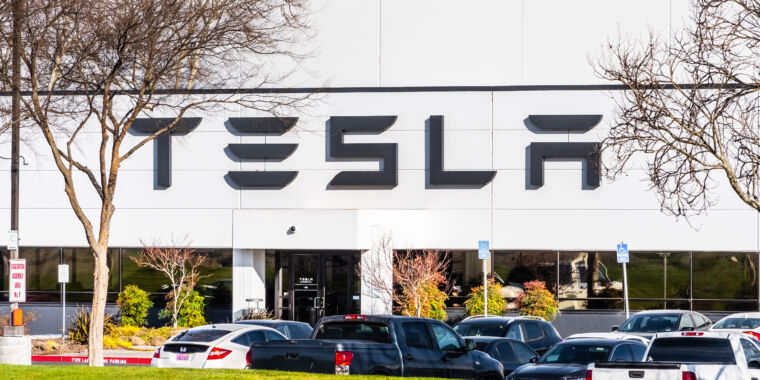

Andrei Stanescu / Getty
Tesla has again surprised Wall Street with better-than-expected delivery numbers. The electric car maker delivered 90,650 vehicles in the second quarter of 2020, slightly more than the 88,400 vehicles delivered in the first quarter. This despite the fact that Tesla’s main factory in Fremont, California, was closed by county officials during the first half of the quarter.
Tesla’s shares jumped on the news. After closing yesterday at a record high of $ 1,120, Tesla shares rose above $ 1,200 in pre-market trading on Thursday morning.
While Tesla’s Q2 deliveries increased compared to the previous quarter, they decreased slightly from the 95,200 vehicles produced in the second quarter of 2019. Tesla also delivered more cars in Q3 and Q4 2019 than in the last quarter. That presumably reflects the effects of the coronavirus in the past two quarters, as well as the phasing out of the federal tax credit for the purchase of a Tesla. Credit halved on June 30, 2019 and was fully phased out on December 31.
Tesla’s 5 percent decline in deliveries year over year compares favorably with other automakers. GM suffered a 34 percent decrease in sales year-over-year in the second quarter of 2020. Fiat Chrysler saw sales drop 39 percent year-over-year. Other automakers who have reported so far have seen year-over-year declines ranging from 9 to 58 percent.
Tesla produced 82,272 vehicles in the second quarter, 8,400 fewer than it delivered, meaning that Tesla has been reducing inventories built up before the pandemic. Tesla says production has now increased to pre-pandemic levels, setting the stage for growth in the third quarter.
Model S and Model X sales continue to decline
In 2018, Tesla delivered nearly 25,000 S and X models (combined) per quarter. In 2019, this fell to around 17,000.
In the first quarter of 2020, deliveries of the Model S and Model X were 12,200. In the second quarter, the number was 10,600.
The refreshing interest in these high-end cars probably reflects the fact that Tesla hasn’t made a major upgrade to any of the models in several years. That makes it difficult for consumers to justify paying a large premium on the new Model 3 and Model Y, which accounted for most of Tesla’s sales in the last quarter.